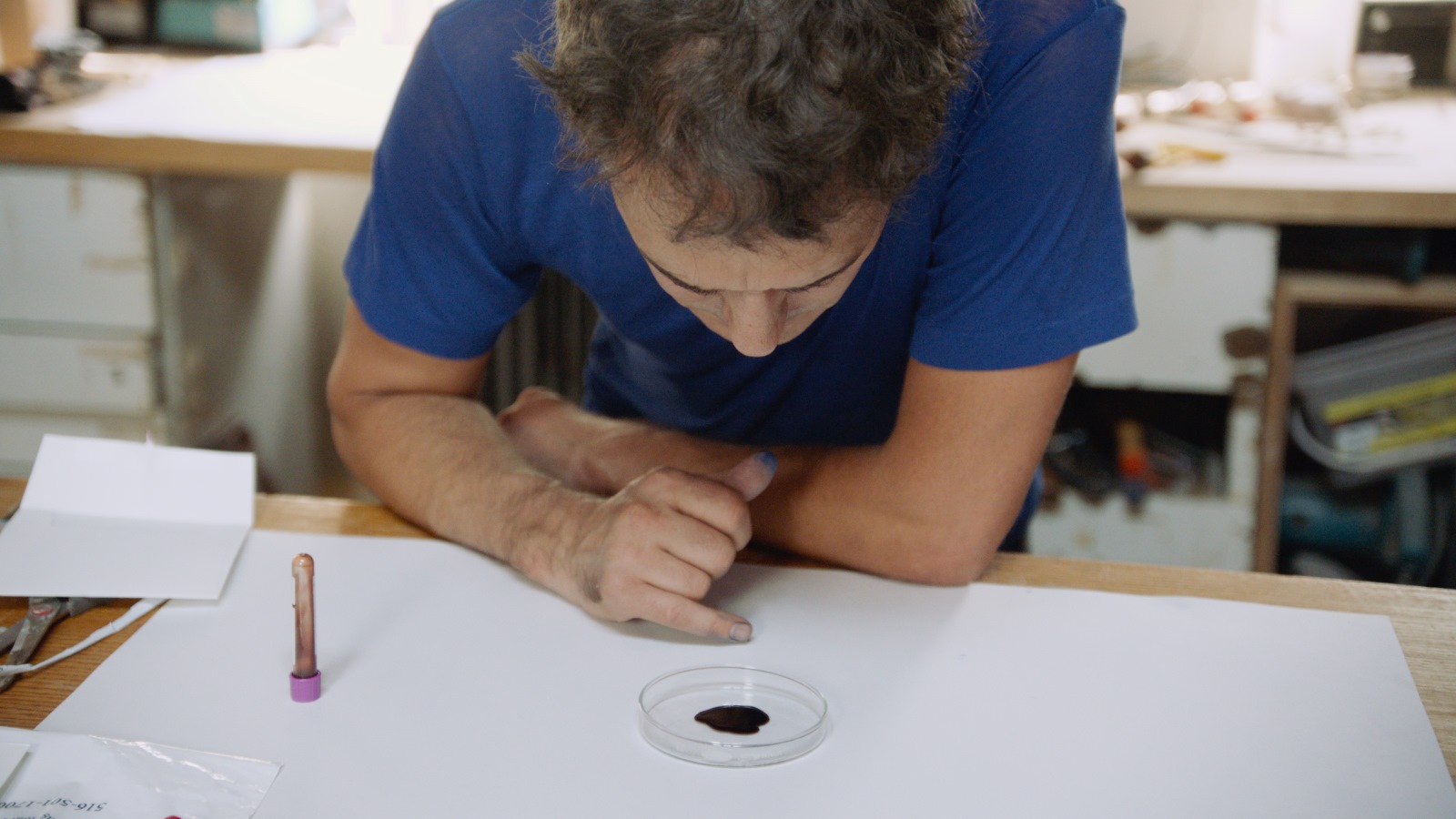“I’ll call for pen and ink, and write my mind.”
-William Shakespeare, Henry VI, Part I
It was a Friday evening in June 2014, a night for celebrating poetry. The occasion was the annual Griffin Poetry Prize, the venue The Fermenting Cellar, in Toronto’s Distillery District in the old Gooderham & Worts factory. On that same night, in the limestone-walled chamber built for brewing whisky, a new film was conceived: The Colour of Ink, about what Samuel Johnson called “the black liquor with which men write.”
The film’s creator, Brian D. Johnson, had retired four months earlier from working full-time as a senior arts writer for Maclean’s magazine. He was networking that night, putting the pieces together for a documentary about poetry, Al Purdy Was Here, a tribute to the late folk-hero poet. At the post-awards party, Johnson felt an anxious tap on his shoulder.
Jason Logan, an art director and graphic designer who used to work at Maclean’s was clutching a small dark bottle. He had heard that Johnson had interviewed Margaret Atwood and he wanted an introduction to her so he could present her with a sample of his home-made walnut ink. She’s not here, Brian told him, though it’s funny you should ask, because I was just interviewing her this afternoon. Jason was disappointed, but before the conversation ended, he blurted out:
“I’m the guy behind Al Purdy’s statue’s Twitter feed.”
Brian had just heard about the mysterious account that afternoon, from Atwood. Someone was sending out messages, supposedly from the two-meter-high black bronze statue of Purdy sitting atop a couple of rocks in Queen’s Park. A sample tweet: “Flying bugs. Maple donut. Beautiful woman smoking while getting a parking ticket.”
“Well,” Brian told himself, “I have to have this in my film.”
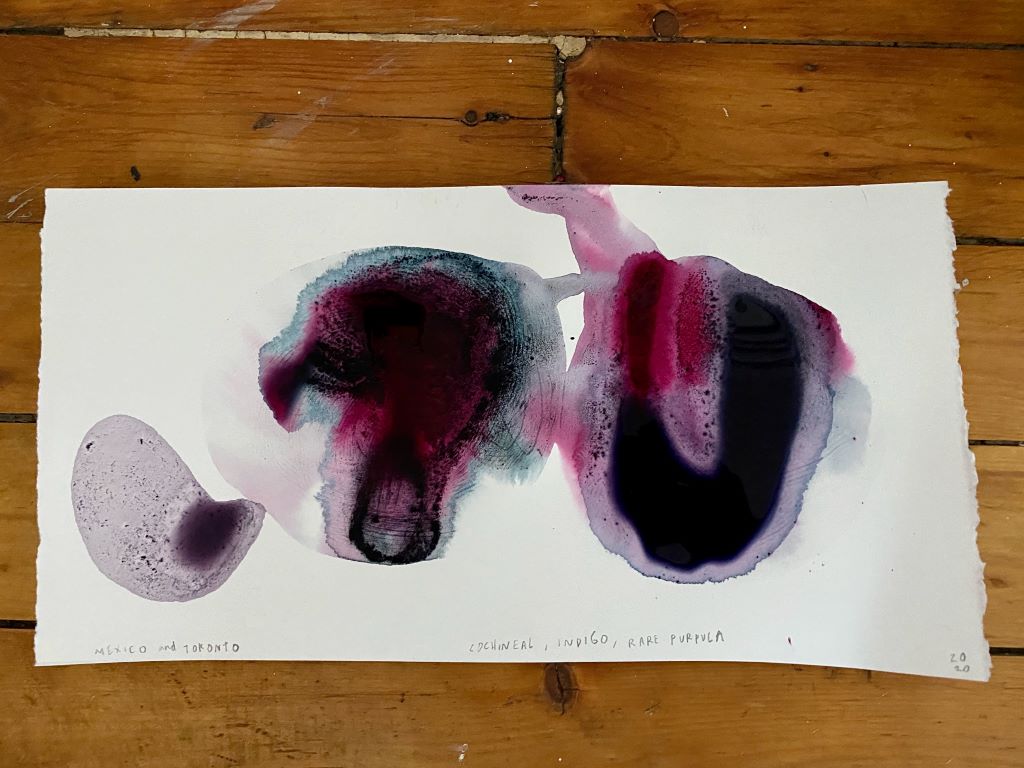
He used the tweets interstitially in the Purdy film, and Jason also appears, unidentified, in a couple of cameos. Brian had taken some footage of Jason gathering black walnuts and making ink, and later Jason asked him if he could cut a reel for him. While shooting additional footage in Jason’s laboratory and home studio, Brian looked through a macro lens at one of Jason’s ink tests on white paper.
“It was like getting a glimpse of this miniature cosmos,” recalls Brian. “That was the moment that I thought ‘This is a movie.’ The idea of magnifying this world that nobody’s ever seen and putting it on the big screen is what made me want to go through all the hoops to make it. In a sense, the whole impulse for the film was to make a landscape of a square of paper by magnifying it on the big screen and explore the dynamic between that landscape and the real landscapes from which the materials were foraged.”
From the moment of that first shoulder tap to the finished film version of The Colour of Ink six years later came a deep immersion in the process of gathering, preparing, and distilling materials, for either a bottle of ink or a feature documentary film.
“People say to me, ‘Ink? Oh, what an interesting niche subject,’” says Brian. “Unfortunately, it spans the globe and touches on virtually every aspect of human communication and culture. So, from the get-go, I knew I bit off more than I could chew. There was a constant process of refinement of what the film would be.”
At its foundation level, The Colour of Ink is about Jason, the founder of The Toronto Ink Company, a “forager” who wanders through the city gathering nuts, brick dust, flowers, lichen, and rusty nails, which he uses to make ink. He then sends bottles to a network of fellow natural ink makers, writers, and artists in Asia, Europe, and North America, as a kind of “Johnny Appleseed” of ink. But he did not look forward to being a centre of attention, hoping the film would be “mostly shots of my back and meeting my amazing friends.”
In establishing Jason’s backstory, The Colour of Ink includes excerpts from a 1982 documentary, All You Have to Do, co-directed by the late poet Bronwen Wallace about her best friend, a young mother diagnosed with terminal cancer. The mother was Pat Logan, who died at 33. Jason and his three sisters were the children in the film.
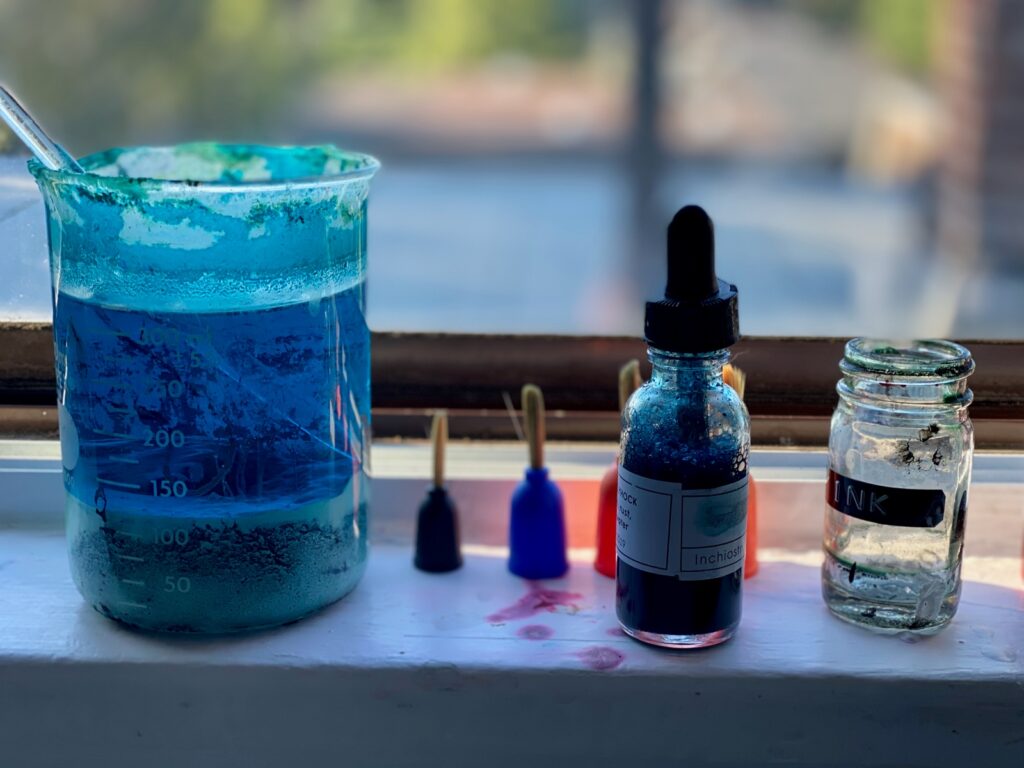
“I’ve sort of railed against this amazing, dark document that we have,” Jason tells me. “That’s pretty weird to bring a camera into a family when their mother’s dying. I thought a lot about what that means, bringing a camera into that situation but, yeah, suddenly, here I am. You have to credit one of Canada’s best-known cinematographers, Nicholas de Pencier, for making that work. I don’t know how he did it. He was a kind of invisible presence who created a space where it just felt really easy for me to just do what I do, foraging and making ink.”
In his career, Jason has designed book and magazine covers and worked as an illustrator for The New York Times and The Globe and Mail. He serves as a creative director for a clothing line, Horses Atelier, run by two novelists: his wife Heidi Sopinka and Claudia Dey. His ink tests and writings have an avid following on Instagram of almost 27,000 people. He’s also the author of a 2005 collection of wry cartoons, If We Ever Break Up, This Is My Book, and more recently Making Ink: A Forager’s Guide to Inkmaking, mentioned by The Guardian as one of the best books of 2018.
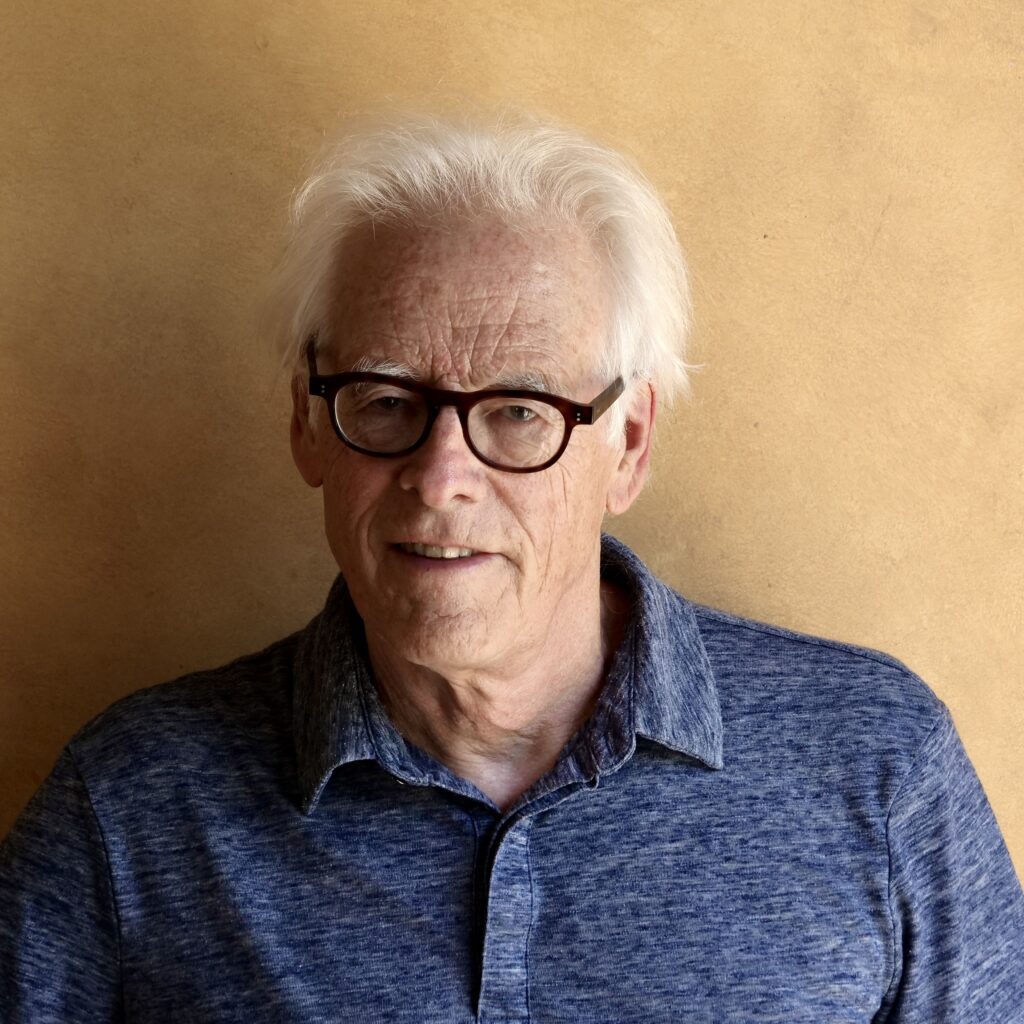
Making Ink, which Brian read an early draft of, is a collection of contemplative essays on foraging, photographs, and doodles from his correspondents (Margaret Atwood is there) with an introduction and closing interview with Jason’s friend, Michael Ondaatje, another writer who still hand-scribbles his novels.
There are few clear images of Logan in the book, and only one facing the camera, from a distance. The self-effacing aesthetic is inspired by the forager’s ethic of maintaining a light footprint, or the Zen artist’s egoless subservience to his material: I ink, therefore I am.
Brian saw Jason as our narrator-guide, while the “covert protagonist” of the film was Ink itself, a shapeshifting, time-travelling spirit, tracing a lattice of connections from Otzi, the iceman, a 5,300-year-old mummy found in the Italian Alps, to a California tattooist, to New Yorker cartoonists, on to painters, writers, and a Japanese calligrapher who writes a single word in one long swoosh across a Jackson Pollock-sized canvas. The film is also about the fusion of the inorganic and organic: animal blood, the iron-rich excretions of bacteria, melted gun barrels, and a weird little gall wasp whose nest provides the ingredients that formed Da Vinci’s notebooks, Shakespeare’s plays, and the Declaration of Independence.
The Colour of Ink is a portrait of a global community of artisans, artists, and researchers who share the desire to leave their marks on the world: There’s Roxx, founder of 2Spirit Tattoo in the Santa Monica Mountains, who seeks the blackest vegan ink they can find and talks about the symbolic power of a tattoo to change their life. There’s Tokyo’s calligrapher Koji Kakinuma, who compares the traditional associations of the calligrapher’s brush with a sword: the paper the enemy and the ink the bloody history. And there’s The New Yorker cartoonist Liana Finck, portrayer of urban feminist angst in her graphic memoir Passing for Human, and Norwegian artist Esther van Hulsen, who draws a five-million-year-old octopus with ink from the fossil of the animal. Many of them share a sense of colour awareness and ink evangelism. There’s Heidi Gustafson, who maintains an “ochre sanctuary” in a rural cabin in Washington State, collecting and distributing the iron-based earth pigments that are our oldest art material. Thomas Little, from North Carolina, echoing Isaiah 2:4, about turning swords into ploughshares, estimates that one Remington rifle barrel can produce enough ink for 1100 King James Bibles.
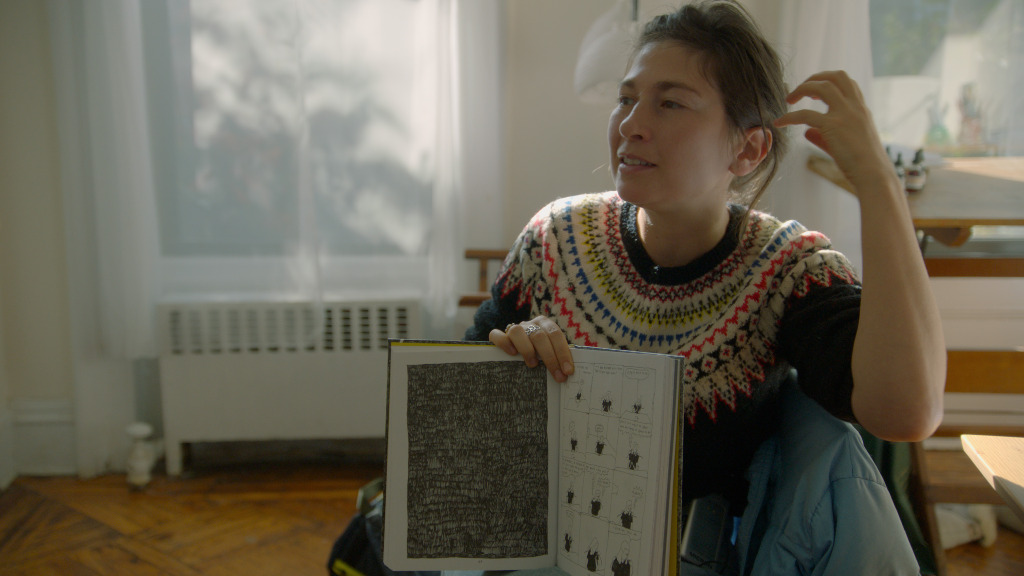
Brian D. Johnson, a journalist I’ve read through my adult life and known, collegially, since the mid-’90s, is uncannily good at making connections. He’s probably the best example I know of what Malcolm Gladwell, in The Tipping Point, called a “connector,” a kind of human computer hub, linking people across an array of social, cultural, professional, and economic circles. For example, between 2009 and 2016 when he was president of the Toronto Film Critics Association, the group leapfrogged in importance as the conduit for one of Canada’s biggest annual cultural prizes, a $100,000 Rogers Best Canadian Film Award.
He also has a versatile creative side, playing and recording with rock bands and writing books, among them a 1974 book of youthful poetry, a 1994 novel, Volcano Days, and a 25th-anniversary book on the history of the Toronto International Film Festival, where he once worked as a driver. Perhaps it was inevitable that he would try his hand at filmmaking, even if it took him until he was past 50 to get started.
Around 2003 he bought a basic camera, which could also shoot video at a choppy 15 frames per second. He was intrigued by how it made everything look “as if it came from 20 or 30 years ago.” He had an epiphany: The camera didn’t record reality; it transformed it. He showed some of his “amateurish experimental videos” to the Toronto filmmaker Ron Mann, known for his counter-cultural documentaries Imagine the Sound (1981), Comic Book Confidential (1988) and Carmine Street Guitars (2018).
“You could make money with this,” Mann told him.
“Which, in retrospect,” says Brian, “was the funniest thing I’ve ever heard because he was so wrong. But Ron’s behind everything I’ve done in film, as the godfather and my mentor, even if I’m the old man in this situation.”
Mann executive-produced two short films for Brian, and served as a producer on Al Purdy Was Here (2015). The Colour of Ink is a co-production between Mann’s Sphinx Productions and the National Film Board. Unlike the Purdy doc, which was shot in a cinéma vérité style to reflect the gruff and rough spirit of the subject, Johnson wanted his sophomore feature to be a true big-screen film that could travel around the world, with a goal of being “less journalism, more art.”
The Colour of Ink takes some cues from Jason’s canted, observational style in the opening sequence, where we see him in Manhattan under a bridge with his lean, long-distance runner’s build; dark, grey-turning curly hair and angular face, picking things up from the ground. Throughout the film, he’s often wearing the same outfit: jeans, a purple T-shirt with blue speckles across the front, and sometimes a light-blue puffer jacket. I asked Brian if it was intended as a kind of uniform:
“No,” he laughs. “We didn’t have a hair and costume department. Jason’s just quite meticulous about what he wears, but it’s often the same thing.”
It reinforces the idea of him as a kind of guide, talking about the process of ink-making, as he works in his kitchen or goes on foraging trips with groups.
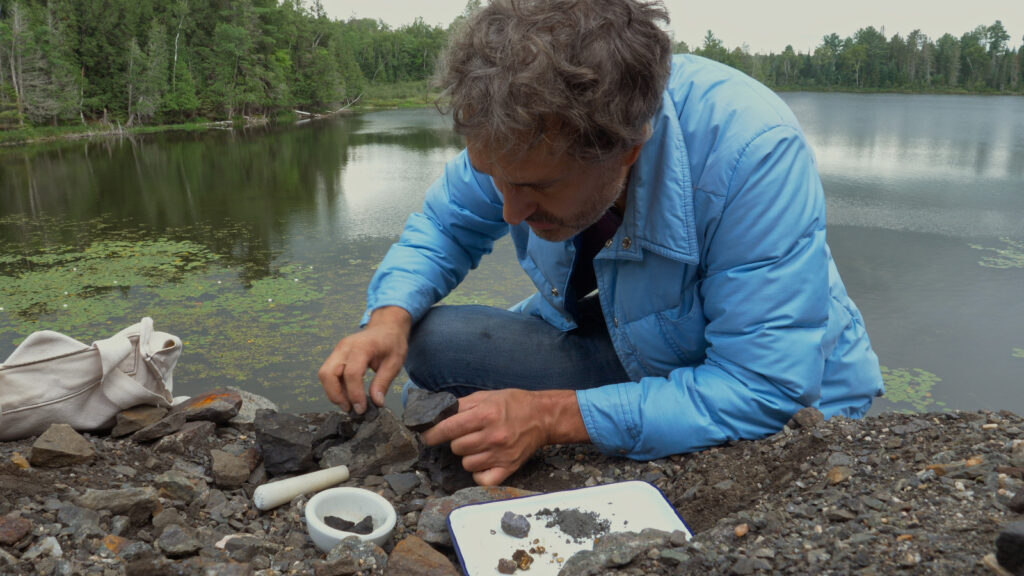
“Jason was the compass needle of the narrative, the one who determines where the story is going to go, where we’re going to travel and who we’re going to meet. He’s someone who’s always on a quest for something, but he doesn’t know what he’s looking for,” observes Brian. “For a documentary filmmaker, that’s gold. You can script, plan, and schedule all you like but, in the end, all you’re looking for is a moment that you never saw coming.”
One thing he didn’t see coming was the COVID-19 pandemic, which made a mockery of most of his scripts and schedules. He had planned for a six-month production schedule which got stretched to three years. He ruefully observes, “We were planning to shoot in seven countries. We got to three of them before we couldn’t travel.”
Though Jason couldn’t travel, his ink could. The filmmakers ended up shooting him doing what he actually does, which is send ink through the mail. Remote shooting was a “nightmare,” says Johnson. “People are on location. There’s no Wi-Fi, no camera monitors. I would have camera operators holding an iPhone up to the viewer.”
But remote editing, with the veteran Robert Kennedy, was relatively straightforward, especially with a new ingredient in the mix: time. Says Brian, “The great thing about documentary is, the more time you have, the better. Time deepens the narrative. Even if you stop shooting, the story continues to develop. Because this took so long, we found other artists, including the New York-based Japanese artist Yuri Shimojo, after the film was fully cast.”
Not only is Shimojo a compelling presence in the film, she is also an essential link to several of its themes: the connections between health, ritual, and memorializing.

For Brian, the extra time meant he could spend longer organizing the material. He first tried to organize the film by colours but found it too constraining. Next, he decided to organize it according to materials—the salt, water plants, and animals—and created a cut of the film with interstitial chapter titles, which he even showed to an audience at the TIFF Bell Lightbox, but felt that it was too prosaic.
“I realized that I really love the role of happenstance in film and that, in an episodic documentary, you don’t have to necessarily order it thematically. That should take care of itself if you structure the narrative properly.”
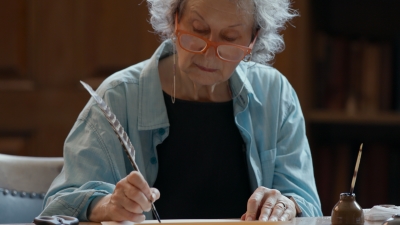
As the film linked sequences through intuitive connections rather than schematic categories, The Colour of Ink shifted from literal to abstract and metaphorical, from prose to poetry: “The lens has a sort of metaphysical power to transform things,” says Brian. “This comes back to Nick [de Pencier], who is so good at finding abstraction in images. It’s a question of seeing structures and images that emerge when you’re taking a deep look at things. That’s why the word “poetic” is used: not to describe poetry, but whenever we superimpose, or pull something out of, what’s in front of us.”
Can the exploration of perception alter an artist’s perception of his own purpose? Jason contends that “Having seen Brian in corporate journalism, as opposed to the making-stuff mode, I think he’s more himself as a filmmaker than he was through his journalist years.”
Brian, who is still a journalist, puts it differently: “I tell people there’s really not a lot of difference between being a film critic and being a filmmaker. The main difference is that, as a critic, you criticize many different films but when you’re a filmmaker, you spend years criticizing the same film, your own. The good part is you can change it.”




